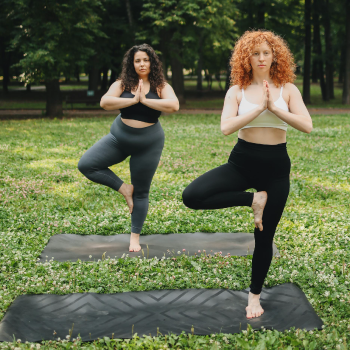Yoga Proves Equally Effective as Physical Therapy for Chronic Low-Back Pain in Diverse Urban Communities
Introduction: In a significant development for chronic pain management, a study published in the Annals of Internal Medicine has brought to light that yoga can be as
beneficial as physical therapy in treating chronic low-back pain. This revelation holds particular importance for diverse urban populations, often grappling with low socioeconomic status and limited access to healthcare.
Study Overview: The study, a collaborative effort led by Boston University and involving institutions like the University of Pittsburgh and the RAND Corporation, spanned a year. It aimed to assess whether the therapeutic effects of yoga on chronic low-back pain are consistent across various demographics, including racial or ethnic minorities and those facing healthcare disparities.
Research Methodology: The research involved 320 adults, aged between 18 and 64, all suffering from chronic low-back pain without a specific underlying cause. The participants, predominantly from low-income, racially diverse backgrounds, were randomly divided into three distinct groups:
Yoga Group: Participants attended a structured 75-minute yoga class once a week, complemented by exercises to practice at home.
Physical Therapy Group: This group received up to 15 personalized physical therapy sessions, each lasting an hour, along with prescribed home exercises.
Education Group: Members of this group were provided with a comprehensive self-care handbook for back pain management. They also received newsletters summarizing key points from the handbook and periodic check-in calls.
Key Findings: The study's results were eye-opening. Both the yoga and physical therapy groups showed similar levels of improvement in pain intensity and disability related to back pain. These improvements were notably more substantial than those observed in the education group. A significant observation at the 12-week mark was the reduced reliance on pain medication among participants in the yoga and physical therapy groups. The positive outcomes for these groups were sustained over the entire 52-week period and appeared to correlate with the frequency of class or session attendance.
Implications and Future Research: The study's findings suggest that yoga could serve as a viable alternative or complement to physical therapy for individuals suffering from chronic low-back pain, particularly in urban settings where access to diverse healthcare options may be limited. Further research is planned to delve into aspects such as cost-effectiveness, work productivity, and the impact on mental health conditions like depression and anxiety.
Conclusion: This research underscores the potential of yoga as a powerful tool in the arsenal against chronic low-back pain, offering hope and relief to diverse communities. It highlights the need for inclusive and accessible health and wellness practices, ensuring that effective pain management solutions are available to all, regardless of socioeconomic status or geographical location.
Written By: Ram on 06-01-2023




























